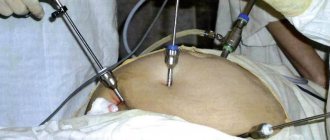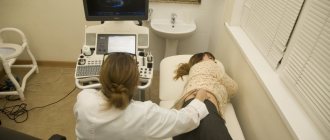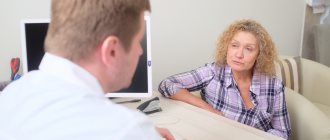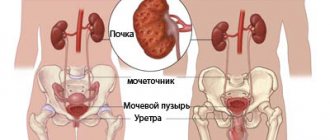The solar plexus is located in the upper part of the abdominal cavity. Pain in this part is one of the most common symptoms with which people consult a doctor. This is due to the fact that it is in this part that pain sensations from the internal organs are reflected.
The causes of pain in the solar plexus area can be roughly divided into two groups. The first category is associated with damage to the plexus itself due to trauma or neuritis. The second is associated with damage to internal organs, which may even be located far from the site of pain.
In fact, the solar plexus is the largest collection of nerve cells. The nerves in this place spread and branch throughout the body, which ensures the relationship of the internal organs with the nervous system.
Depending on the causes of discomfort, the nature of the pain can vary greatly. The pain can be acute, sharp, strong or, conversely, aching and pulling. Patients may complain of both episodic and constant pain. What causes stomach pain in the solar plexus area?
Pain due to damage to the solar plexus
True pain in the middle of the sternum can be the result of injury, intense physical activity, as well as neuritis and neuralgia.
Physical exercise
In this case, the pain takes on an acute, stabbing and burning form. The severity of the pain syndrome is so intense that it forces the person to stop and take a break. This kind of soreness is temporary and is associated with sports or hard work. Rest enough, don’t overwork yourself in the future, create a work schedule, and the problem won’t bother you anymore.
Abdominal pain during physical activity is not dangerous and pathological, but if it becomes permanent, then this may be a signal of the development of a serious pathology
Injuries
An intense blow can lead to rupture of the diaphragm and the appearance of a hernia, which can only be eliminated through surgery. In mild cases, the blow causes the diaphragm muscle to contract. As a result, it is difficult for a person to breathe, and he may even lose consciousness.
Along with acute burning pain, patients complain of the following symptoms:
- burning inside the abdomen;
- nausea;
- urge to defecate;
- breathing problems, in particular, it is difficult for the patient to take a breath;
- dull pain at the site of the projection of the heart;
- the patient takes a characteristic position: lies on his side, bends his legs at the knee and presses them to his stomach.
As for first aid, the victim should be laid down, ensure normal breathing, straightening the torso. You can also massage the affected area. In severe cases, it may even be necessary to use ammonia.
If the victim experiences vomiting, convulsions, or severe abdominal pain, immediately call an ambulance. If breathing stops, chest compressions will be required. If pain persists after the blow, then the development of an inflammatory reaction can be suspected.
Neuralgia
Bacterial and viral infections can cause neuritis. The inflammatory process can also be caused by external factors: nerve compression, injury, intoxication. I often associate neuritis with hypothermia.
With neuritis, the nerves that make up the solar plexus become inflamed, which causes specific pain in the upper abdominal cavity. People who lead a sedentary lifestyle or engage in excessive physical activity are susceptible to neuritis.
With neuritis, characteristic symptoms appear, namely:
- attack of acute pain. It acquires a stabbing and boring character;
- a painful attack can spread throughout the abdominal cavity and even radiate to the back;
- feeling of fullness and heat in the middle of the abdomen;
- Stress and physical activity only increase the severity of pain.
With neuralgia, the solar plexus nerves are irritated; the clinical manifestations of neuritis and neuralgia are very similar; a neurologist will help with differential diagnosis
When using solarium, the solar plexus tissues become inflamed and irritated. Patients complain of burning, boring pain in the solar plexus area. Along with this, dull pain in the heart and chest, heaviness in the abdomen, bloating, belching, heartburn, and constipation appear. Solarite causes a feeling of heat inside the abdomen, while the body temperature remains normal.
Treatment of solarium is carried out using physiotherapeutic methods, massage, breathing exercises, as well as anti-inflammatory and antispasmodic agents.
For neurological disorders, treatment includes taking B vitamins, stimulants of biological origin, as well as drugs to increase the conductivity of nerve fibers and improve blood flow.
Diagnosis of neuritis
The success of treating this disease depends on many factors, and important here are the age of the patient and the stage at which the disease was detected. That is why early detection of pathology plays such a significant role.
Since the symptoms of neuritis are in many ways similar to the clinical manifestations of cerebrovascular accidents, multiple sclerosis and brain tumors, a careful differential diagnosis is required. It must be carried out by a qualified neurologist.
The doctor receives valuable data from a survey and physical examination of the patient, checking reflexes, muscle strength and other parameters. If necessary, the patient may be recommended to consult with specialists.
To clarify the diagnosis, the following studies may be prescribed:
- blood tests (clinical and biochemical),
- general urine analysis;
- radiography;
- MRI (magnetic resonance imaging);
- electroneuromyography (ENMG);
- CT (computed tomography).
Nature and localization of pain
A specialist will be able to answer the question of why the abdomen hurts in the solar plexus area after conducting a comprehensive examination. The nature of pain and localization can give a complete picture of the patient’s health condition.
Chest pain along with nausea may indicate the following problems:
- injuries and irritations of the solar plexus;
- inflammation of the stomach;
- peptic ulcer;
- pancreatitis;
- duodenitis;
- neoplasms;
- helminthiasis;
- intestinal infections;
- food intoxication.
Epigastric pain accompanied by nausea most often indicates gastritis
Discomfort under the solar plexus can be associated with the following pathological processes: cystitis, urethritis, problems with the female genital area, appendicitis, peritonitis, intestinal diseases.
Pain above the solar plexus can occur for the following reasons: diseases of the lungs, pleura, esophagus, heart, diaphragm. If discomfort appears on the left side, then you can suspect problems with the stomach, pancreas, or left kidney. Right-sided pain is a symptom of diseases of the esophagus, liver, right kidney, and ureter. Gallbladder.
Stomach diseases as a cause of pain in the solar plexus area
Part of the stomach is practically located in the solar plexus. It is for this reason that pathologies of this organ often cause discomfort in the solar plexus area. Soreness can appear with gastritis, peptic ulcers and neoplasms.
Gastritis
Where does gastritis hurt?
Inflammation of the gastric mucosa can be caused by a bacterial infection, dietary errors, helminthiasis, taking certain medications, alcohol abuse, and more.
Discomfort in the upper abdomen is aggravated by the appearance of cramping pain, weakness, heartburn, nausea and repeated vomiting. A gastroenterologist treats gastritis. In the acute period, a gentle diet and fractional meals are indicated.
Ulcer
An ulcer is essentially a chronic defect in the gastric mucosa. Poor nutrition, stressful situations, chronic gastritis, hereditary factors - all this and much more can trigger the development of ulcers.
The disease manifests itself in the form of the following symptoms: heaviness in the stomach after eating, nausea, vomiting, belching, heartburn, constipation, weight loss, flatulence, coating on the tongue. The ulcer should be treated promptly, otherwise complications may arise that require surgery.
Cancer
The causes of malignant cell degeneration are still not fully understood. The following provoking factors can provoke a mutation: gastritis, ulcers, unhealthy diet, alcoholism, smoking, hereditary predisposition and others. Chronic gastritis with low acidity and peptic ulcer are considered a precancerous condition.
If the tumor is small in size, the pathological process can be practically asymptomatic. Only in some cases do patients begin to complain of fever, loss of appetite, and aversion to meat and fish. As the tumor grows, pain in the solar plexus area, nausea, vomiting, rapid satiety, and weight loss appear.
Diseases of the duodenum
A common disease of the duodenum is duodenitis - inflammation of the mucous membrane. Often the pathological process develops in childhood. The bacterium Helicobacter Pylori plays a major role in the formation of the disease.
In addition to pain in the solar plexus area, weakness, nausea and vomiting appear. The process often develops against the background of acute inflammation of the stomach and intestines. Patients should remain in bed and fast during the first days.
Astringent and enveloping drugs are prescribed, and in case of severe pain, antispasmodics. An intestinal ulcer and neoplasm can provoke discomfort in the upper abdomen.
Reasons for the development of neuritis
Neuritis occurs due to compression of the nerves, which occurs due to narrowing of the bone and fibrous canals/
Neuritis (also called local neuritis) can develop against the background of injuries, arthritis, infectious and tumor diseases, infectious diseases of a viral or bacterial nature. Also, the development of pathology can be facilitated by various intoxications (from drugs, alcohol, drugs), hypothermia, vascular, metabolic and endocrine disorders, autoimmune diseases, spinal diseases and vitamin deficiency.
Pancreatic diseases
Let's talk about a common disease of the pancreas - pancreatitis. Normally, gland enzymes are secreted into the duodenum. With the development of the inflammatory process, enzymes are activated directly in the pancreas, which leads to tissue destruction.
Changes in hormonal levels, cholelithiasis, ulcers, infectious processes - all this can trigger the development of pancreatitis. Soreness in the solar plexus area becomes permanent. The pain syndrome can become encircling and radiate to the left side of the body.
Acute pancreatitis is a reason for hospitalization. Patients should fast for the first day. The fight against pathology includes antibiotics, cytostatics, antienzyme agents and more.
Solar plexus pain can cause pancreatitis
I would also like to mention tumor processes. Discomfort in the epigastrium occurs only when the tumor reaches a large size. In addition to pain, patients may experience vomiting, indigestion, jaundice, dizziness, and sweating.
Intoxication of the body with food is another cause of discomfort in the solar plexus area. If poisoning is caused by poor-quality food, symptoms of intoxication appear two to four hours after consumption.
If it’s all about poisonous berries or mushrooms, then it can take up to twelve hours before the first symptoms appear. The pain is accompanied by nausea, vomiting, diarrhea, and fever. Stomach pain can also occur from helminthic infestations. This happens if the larvae are localized in this organ.
Cramps and spasms in the intestines can be felt by the patient as pain in the stomach. In order to dissolve parasites, the stomach secretes hydrochloric acid in excess quantities, which manifests itself in the form of heartburn. The parasitic disease also causes nausea. To get rid of worms, anthelmintic drugs should be used.
Treatment of neuritis
The approach to treating neuritis should be comprehensive.
Drug therapy for neuritis is aimed at eliminating the root cause of the disease, restoring nerve function, relieving inflammation and pain, activating blood flow and metabolic processes, improving nerve conduction, strengthening the body's defenses, etc.
Common non-drug treatment methods include therapeutic exercises, acupuncture, manual techniques and massage (in the absence of contraindications).
A special place in the treatment of neuritis is given to physiotherapy: treatment with waves and currents, electrophoresis, magnetic therapy, laser therapy, radon and mud baths, etc.
Surgical treatment (suturing or plastic surgery of the nerve) is resorted to in the absence of a positive effect from conservative therapy.
Prevention of neuritis
Simple and effective measures will help to resist the development of the disease:
- avoiding hypothermia;
- proper balanced nutrition;
- timely treatment of viruses and infections;
- strengthening the immune system (vaccination, hardening, vitamin therapy);
- regular examination of the body.
At the MedicCity clinic, the professional experience and knowledge of doctors from 30 medical specialties is at your service. With us you can undergo a complete diagnosis of the body and get advice from the right specialist at a time convenient for you, without wasting time and nerves. Don't give diseases a chance!









